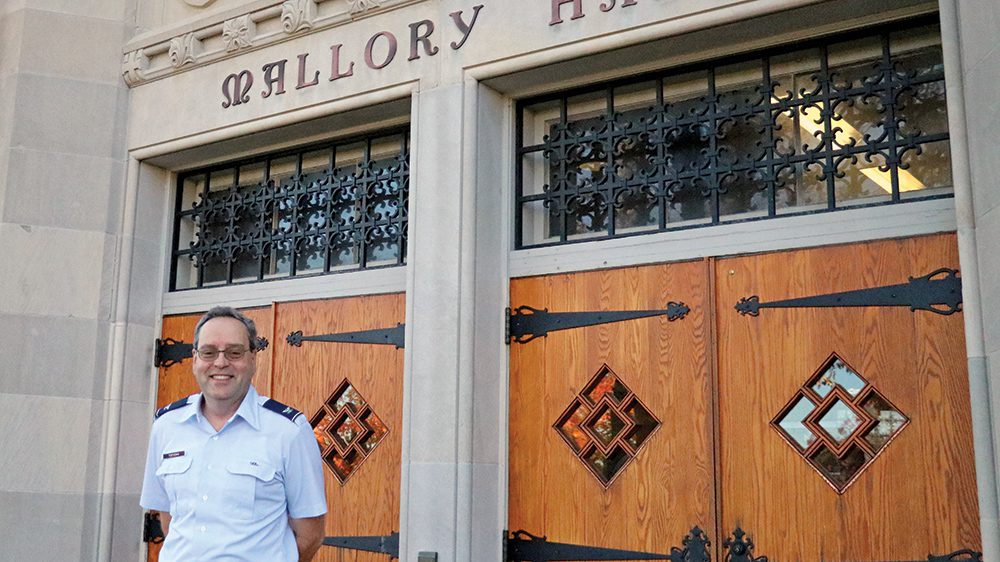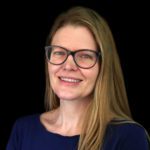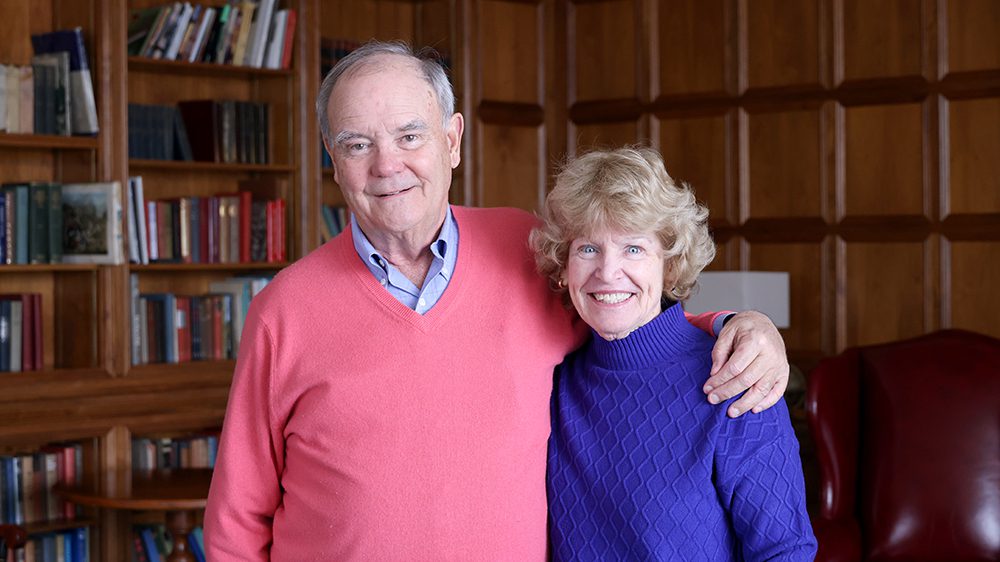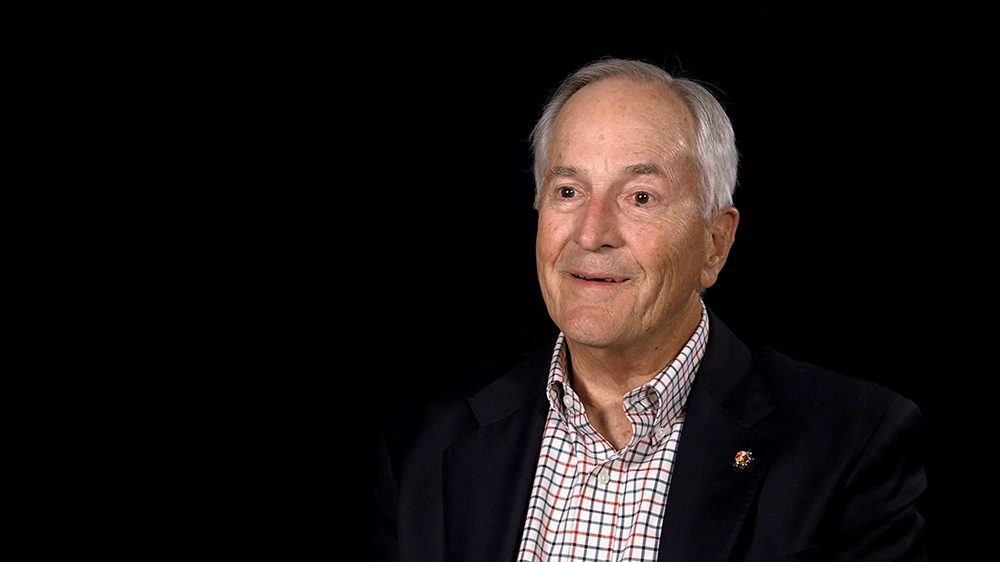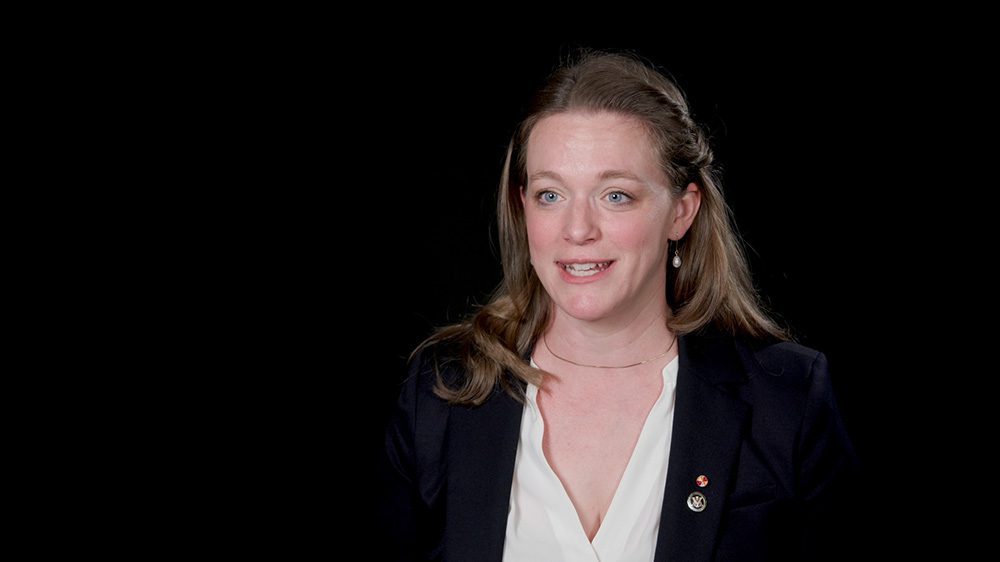Col. Greg Topasna, Ph.D., teaches VMI’s astronomy classes and holds one of five Peay Chairs at the Institute. He’s the keeper and maintainer of the Institute’s observatory in McKethan Park and the custodian of an extraterrestrial and terrestrial material collection on post.
“I sometimes joke that it’s the ‘Department of Physics and Greg,’” Topasna smiled, talking about his status as the lone astronomy professor in VMI’s Department of Physics and Astronomy. He began teaching at VMI in 2000 and became the Institute’s astronomer in 2006. In this role, he teaches astronomy classes and advises astronomy minors. Two of his favorite courses are astrobiology—where students ponder life in other parts of the universe— and cosmology, where they consider theories about how the universe was made and “how we got here.”
Visitors to Topasna’s office can see several programs running on his computer screens. He’s immersed in complex topics, like measuring the distance between stars and the earth and determining if there is matter—like dust—in between. An enthusiastic teacher, Topasna easily switches to explanations in more straightforward language for nonastronomers. He likes to share how to see stars without any special equipment. He’s a fan of a free program—stellarium.org—which anyone can download to see a realistic, 3D sky. The program, he said, is updated regularly by astronomers around the world.
No visit to Topasna is complete without a short detour to Mallory Hall’s basement, where he’ll let visitors hold bits of the universe in their hands—a piece of Mars, depleted uranium, bits of meteorites, and more. The collection is destined for more exposure in a display case on Mallory Hall’s third floor. Cadets in the Astronomy Club are working on ways to showcase the specimens and draw in passersby. Rather than labeling what could be mistaken for ordinary rocks, Topasna has the cadets looking into using an iPad and other technology, which can show video or photos relating to each piece in the exhibit. For instance, the collection includes a portion of the Chelyabinsk meteor, which landed in Russia in 2013. With technology, someone could watch video footage of the meteor falling, giving more context to the tiny fragment on display.
Topasna enables cadet learning through hands-on research and projects. He involves cadets in research, often beginning with a night or two at the observatory.
If conditions are perfect, Topasna and his students can use the observatory about 10 days per month—during the new moon, plus a few days on either side of the new moon.
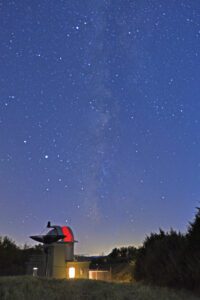
VMI’s observatory, located a few miles east of post, in McKethan Park, is one of the Institute’s great resources. From the observatory, cadets can measure things no one has measured before, said Col. Greg Topasna, Ph.D., astronomy professor.—VMI Photo by Kelly Nye.
“The weather during that one and a half weeks has to be clear. You have these windows of opportunity to go, and you make the most of it,” he said. The first part of the night is spent getting the system set up. There’s nothing worse than spending the night gathering data, he said, and then having to sleepily work backward to set up measuring standards at 4 or 5 a.m.
VMI’s observatory helps the Institute astronomer help his students. Often, when they finish a long night looking at the heavens, he points out to the students that they’ve truly done something new. They’ll be looking through their findings, and he’ll say to the cadet, “No one’s ever done that before. You’re the first person to measure that. You’ve done something no one else has done before.”
Aside from weather conditions and making sure instruments are set to capture data correctly, light pollution is slowly becoming a concern. Nighttime illumination from superstore developments north of Lexington is almost four miles from the observatory by road but closer as the crow flies—and as light travels. The lights are gradually adding to the area’s light pollution. Topasna is hopeful that the observatory can continue to gather data for another decade or two—or longer, depending on area growth.
At the observatory, VMI’s only astronomy professor is also the guy who takes charge of fixing anything and everything. He’s built equipment, like a polarimeter, and has developed a keen sense of how each piece of equipment should sound. A few years ago, he heard a different noise when he opened the top of the observatory.
“In the middle part [of] the summer, I was out there, got in, turned the telescope, and turned the dome. It makes a familiar noise that I’m used to and then when it stopped, I kept hearing this [noise],” he said. He looked up and “there was the giant black snake just kind of making its way along the track.”
The snake has proven to be a good team player, keeping the observatory free from rodents, Topasna noted. “Ever since two black snakes moved in, I’ve been very happy.”
One of his wish list items—aside from another astronomer—is a place on post for cadets to look at the sky. He’d like a cement pad and a dome and could use a telescope he has on hand to put the set-up somewhere on post, like the roof of Mallory Hall. The observatory is a valuable resource for VMI, but weather, light conditions, jam-packed cadet schedules, and distance make it inaccessible for many cadets most of the time. A telescope on post, though not able to measure data in the same way the observatory does, would conveniently allow cadets to view the night sky almost any evening.
Topasna’s chair, the Commodore Matthew Fontaine Maury Chair for Academic Excellence, is funded by the General J.H. Binford Peay III 1962 Endowment. When a professor holds a chair or professorship at VMI, the private funds pay the professor’s entire salary and add a financial bonus to the salary. The Institute is then able to use the commonwealth-provided funds, which would have been used for the chair-holder’s salary, to increase pay for fellow VMI faculty.
Topasna appreciates many aspects of being named a Peay Chair. He’s happy that his colleagues get a small boost in salary, and of course he appreciates his own raise in salary. He also feels that the “Peay Chair” title under his signature adds a bit more weight to any communications he makes—particularly in support of students.
If he advocates for a student applying for a grant, a program, or graduate school, his letter doesn’t come just from Col. Greg Topasna, Ph.D. It comes from the holder of a Peay Chair.
“It’s a little more gravitas,” he said. “I can help my students through that title.”
He also sees the value of being able to help his students more and that his state-supported salary is used to better VMI as a whole. A professor who loves what he does, Topasna is dedicated to his job and his students—and would do it every day, with or without recognition.
“I’m going to go to work, do my job, and enjoy what I do,” he said. “That’s why I became a professor.”
The General J.H. Binford Peay III 1962 Endowment for Academic Excellence began in 2017. The Peay Endowment has four funds. Two funds—the Peay Chairs, with five VMI professors, and the Peay Merit Scholars, with three current cadets—are actively moving VMI forward. The other funds are the Peay Fellows, which assists alumni in obtaining graduate degrees, and the Peay Academic Excellence Fund, which gives VMI the ability to take advantage of unrestricted funds to distribute funds to the areas of highest need within the endowment.
